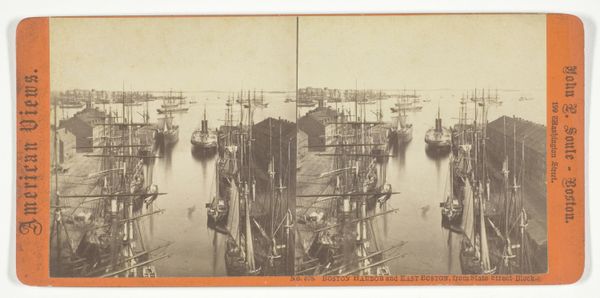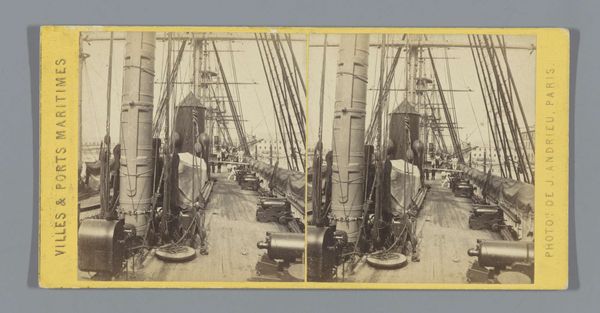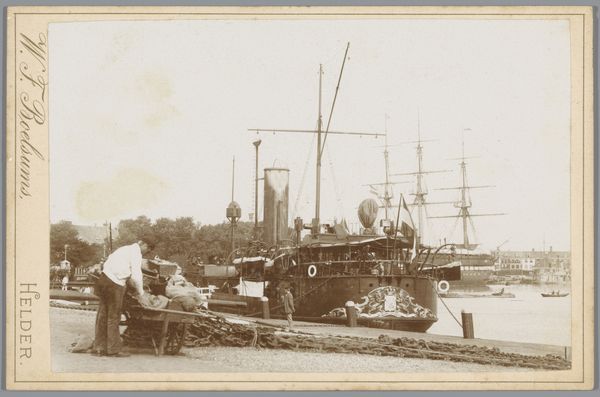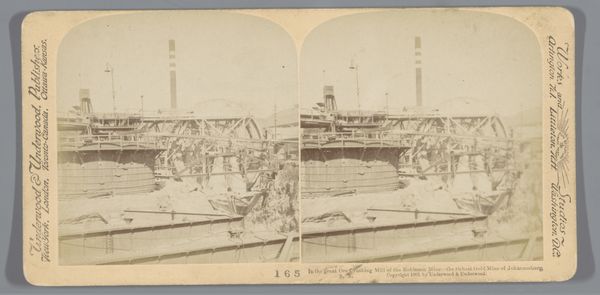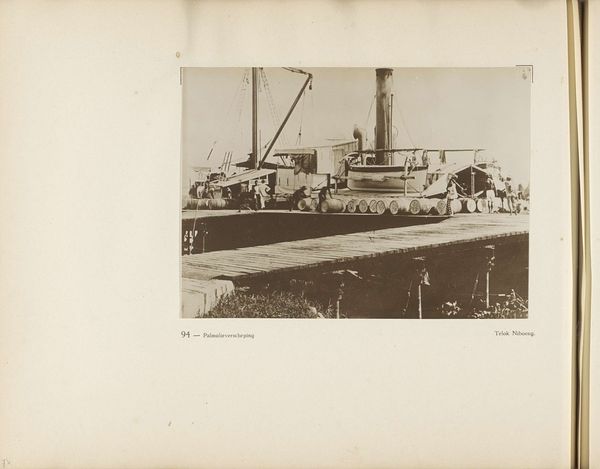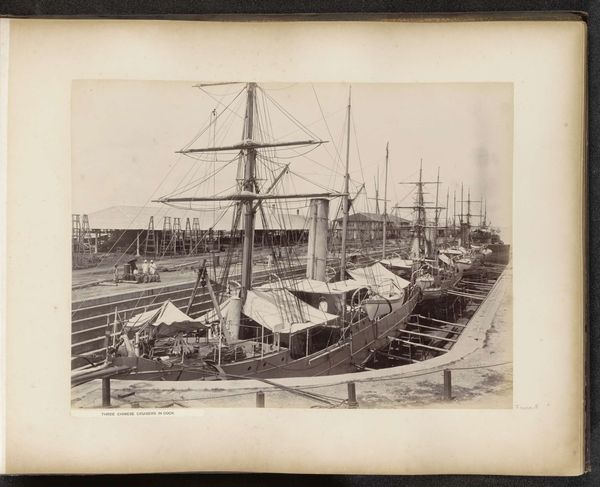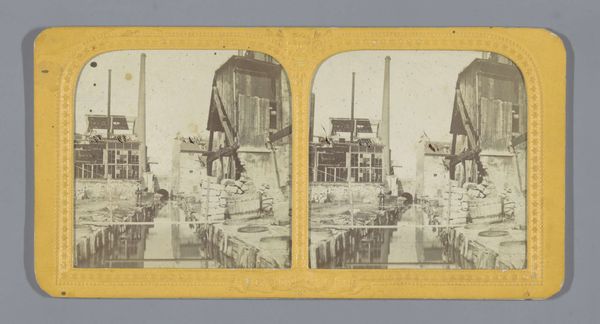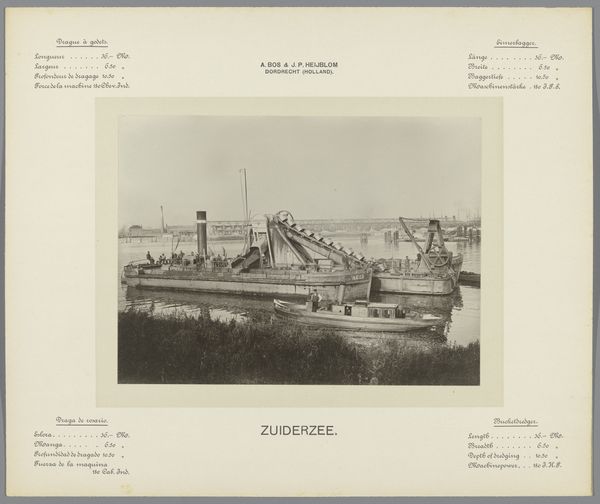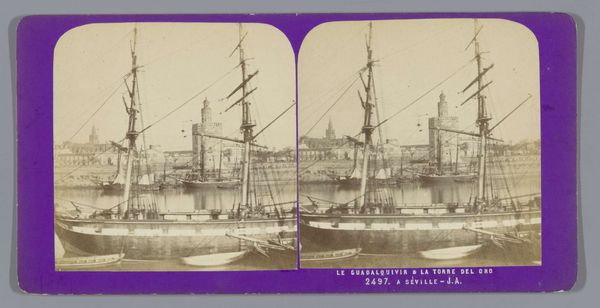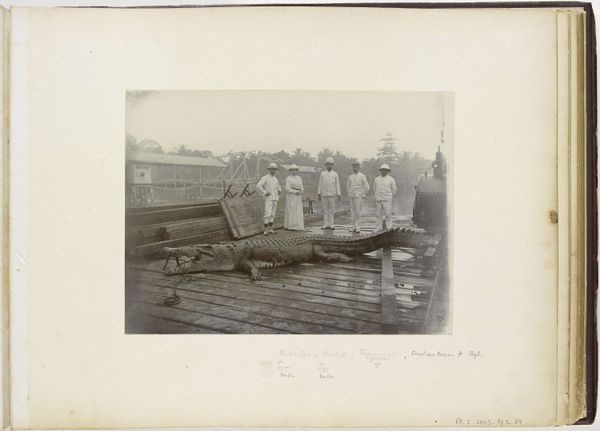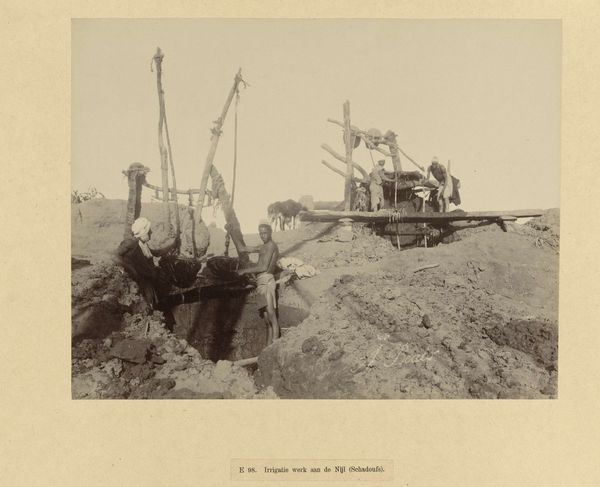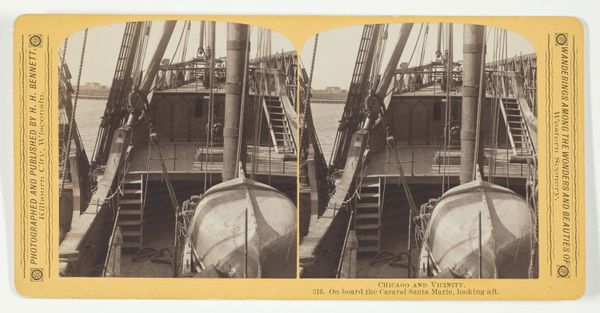
Gezicht op het schip de Norman in de werf te Kaapstad met aan boord de Lancashire Fusiliers 1900
0:00
0:00
print, photography, gelatin-silver-print
#
pictorialism
# print
#
landscape
#
photography
#
coloured pencil
#
gelatin-silver-print
#
cityscape
Dimensions: height 88 mm, width 178 mm
Copyright: Rijks Museum: Open Domain
Curator: This photograph, created around 1900, presents "Gezicht op het schip de Norman in de werf te Kaapstad met aan boord de Lancashire Fusiliers"—"View of the ship the Norman in the shipyard in Cape Town with the Lancashire Fusiliers on board." Editor: It has an interesting, slightly mournful quality, wouldn't you agree? The composition is dominated by the sheer scale of the ship against the busyness on the ground. Curator: It is a gelatin-silver print. Looking at the image through a historical lens, this scene in Cape Town encapsulates a specific moment in the age of imperialism and colonial governance. The Norman would have been a key instrument for transporting troops across the British Empire, demonstrating logistical prowess, and the movement of military personnel. Editor: The very sight of a ship like the Norman must have represented more than just transport. A big ocean liner on the background symbolizes both the connectivity, as well as the military presence of colonial rule. Look at the repeating barrels and stacks of supplies – symbols of infrastructure. What kind of emotional responses do you think that these sights would conjure up for the Lancashire Fusiliers? Curator: Likely complex ones. Pride and duty, certainly, but also a recognition of their role within a system built on resource extraction and military might. I imagine for those *not* on the ship—those living in Cape Town— the ship acted as a very visual signifier of British presence. Editor: So, even a seemingly simple photograph reveals layers of interconnected meanings – the weight of colonial power, the practicalities of logistics, the hopes and fears of individuals involved. Fascinating to tease apart, isn’t it? Curator: Absolutely. These seemingly still, straightforward historical images invite us to engage actively with the past, always questioning our assumptions and digging deeper.
Comments
No comments
Be the first to comment and join the conversation on the ultimate creative platform.
